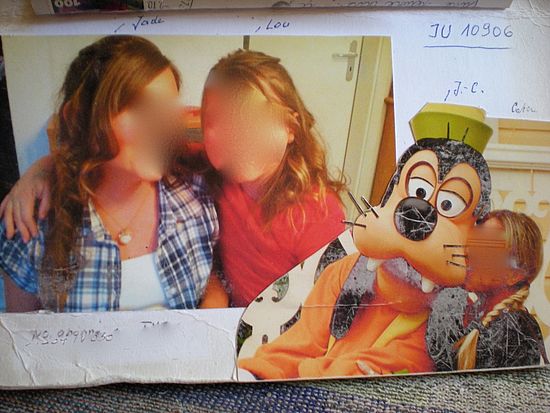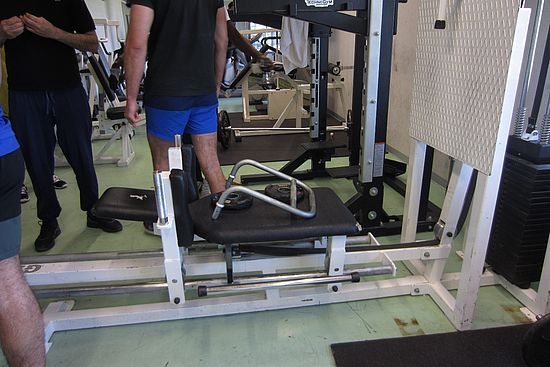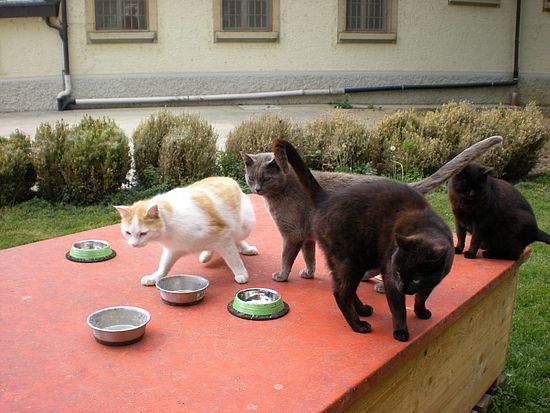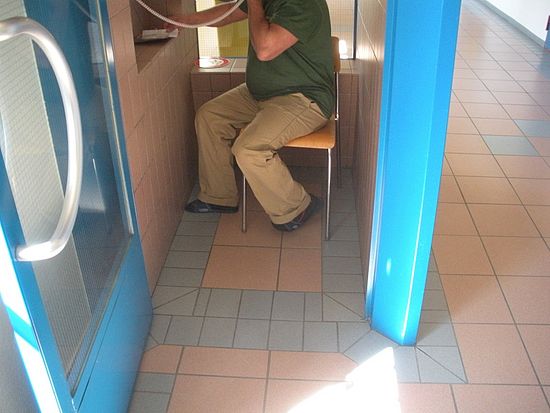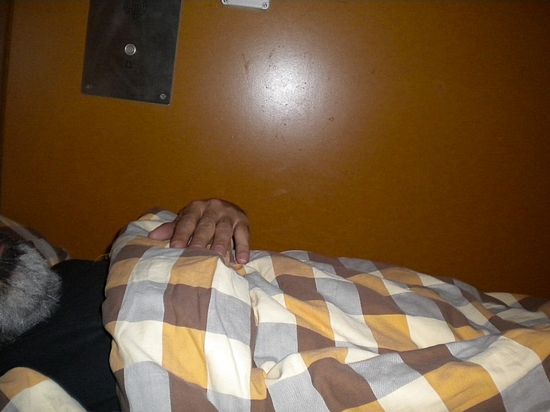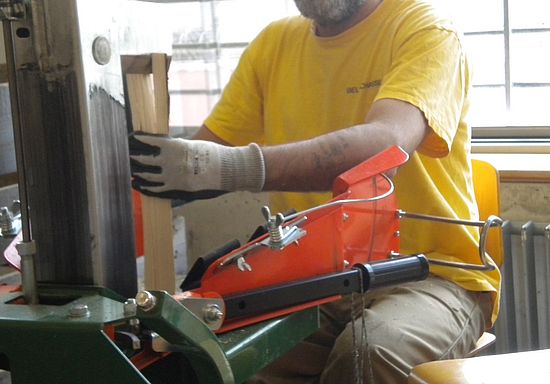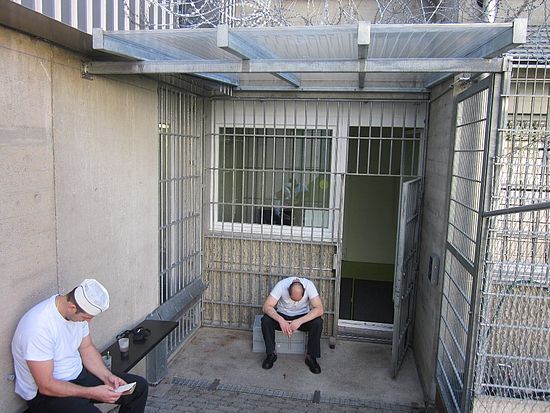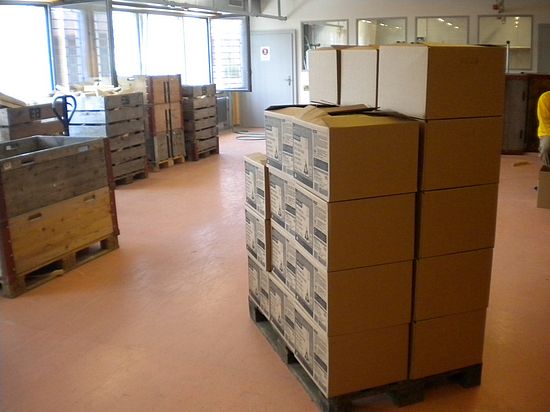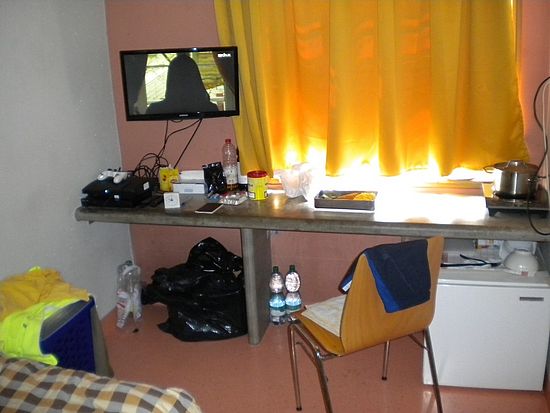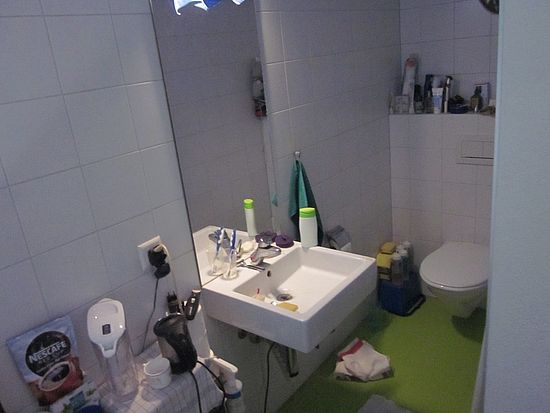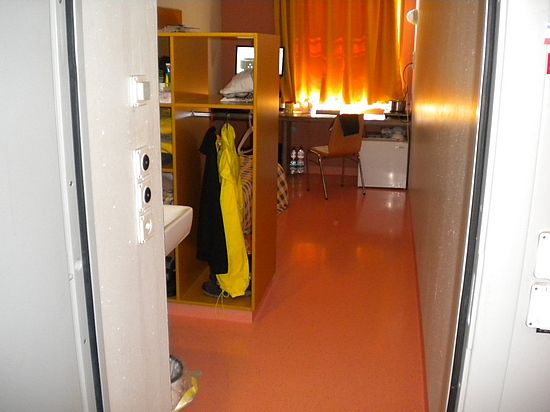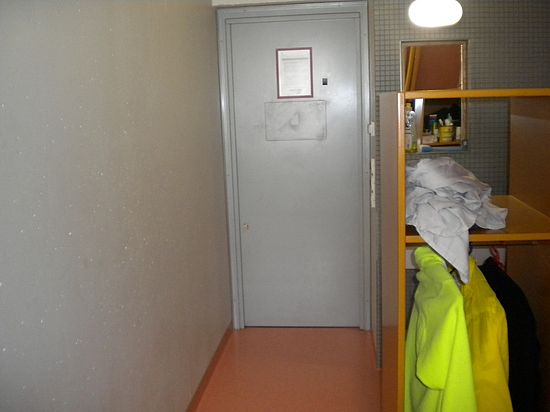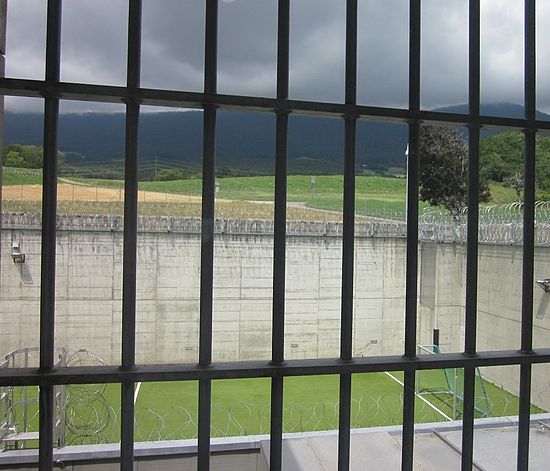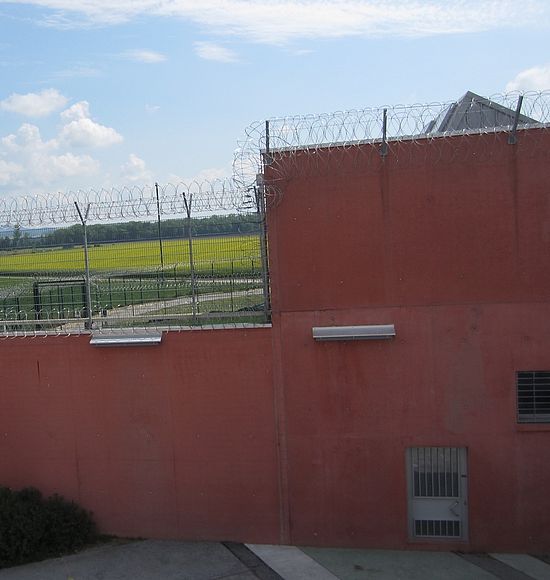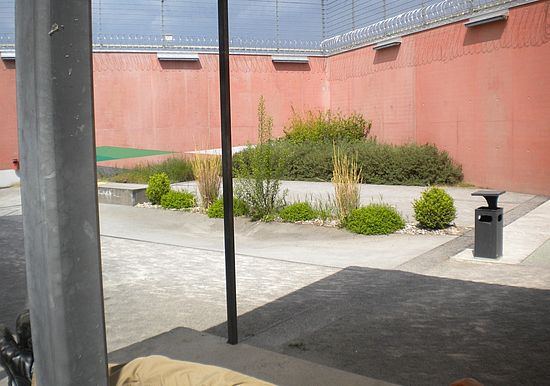
"Me with my work colleagues with whom I spend a lot of time (translated from Romanian)"
Change of perspective - Ethnological photo project by Prof Cornelia Hummel
In two Swiss prisons, older incarcerated adults were invited to document their everyday lives photographically. In doing so, we are reversing the perspective: Instead of looking at ageing in prison from the outside, we take the perspective of the older people themselves.
Eight male incarcerated adults aged between 50 and 77 were equipped with simple digital compact cameras and a paper notebook. They were asked to document their daily lives within three days. Of the eight people, seven used the notebooks to provide picture captions. One of the eight people was an illiterate person. The photos not only document 'The Prison' but also show a restricted 'home' and the usual everyday processes. The daily routines: eating, moving around, working, cleaning the cell, showering, reading, watching TV, resting, taking medication, sleeping. The pictures are not spectacular. They could almost be described as modest - like the everyday life they depict. Nevertheless, they are valuable.








Many photos refer to work, either directly or subliminally, by capturing a place where one 'takes a break' or photographically capturing a morning of sleeping in on a day off. These photos reflect the strong structuring of life in prison through work, regardless of the prisoner's age - as the obligation to work in prison does not recognise retirement.




Everyone took a picture of their cell - and the possessive determinative is not insignificant: 'my' cell, sometimes also referred to in the written commentaries as 'my room' or 'my abode', is the space of retreat, of quiet, of intimacy, of a contrasting solitude, because it is alternately soothing or painful. Although the room consists of a single space, it can be divided into several sub-spaces that correspond to the spatial organisation of a normal flat.
Several incarcerated adults documented and emphasised the importance of the double lock on the door of the cell: the large lock is the guards' lock, the small lock allows the prisoner to close the cell from the outside during the working day or from the inside during breaks, in the evening and on public holidays. A photographer also photographed his cell door from the inside with the comment "I lock my cell from the inside to have more privacy". Several incarcerated adults emphasised the need for privacy: "At my age, I long for some peace and quiet".




Pictures takenthrough windows are a recurring motif. Especially those taken through the bars of the windows. Several photos were taken with the camera placed between the bars to bypass them. Sometimes, the photo and its caption cause confusion at first glance: for example, the caption of a photo taken from the windowof a work studio reads: "I go to the window every day to see the cows and sheep in the pasture", although the wood store of the prison's carpentry workshop can be seen there. The prisoner's view is not ours: Pastures, cows and sheep must be glimpsed in the distance. You have to look for the "field in front of my room", because what you can see is the perimeter wall. To look out of the window is to "escape in thought", as one person wrote, it is a walk outside and at the same time an introspection, as another person noted: "I spend a lot of time at the window and look at the church, the gardens, the trees and think about my life." These images from the window contrast with the images of the stone courtyards (or artificial turf pitches), the courtyards where the seating is located with sparse benches - if there are benches at all - and rare shade.





